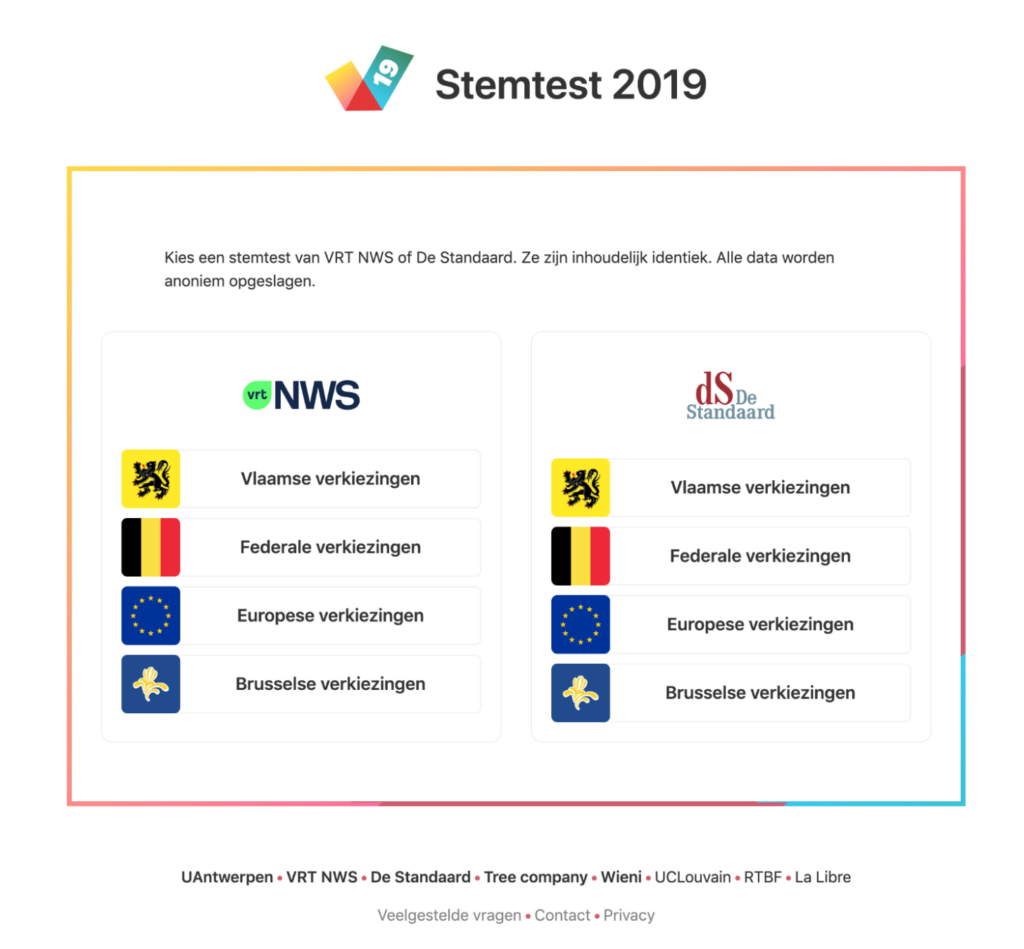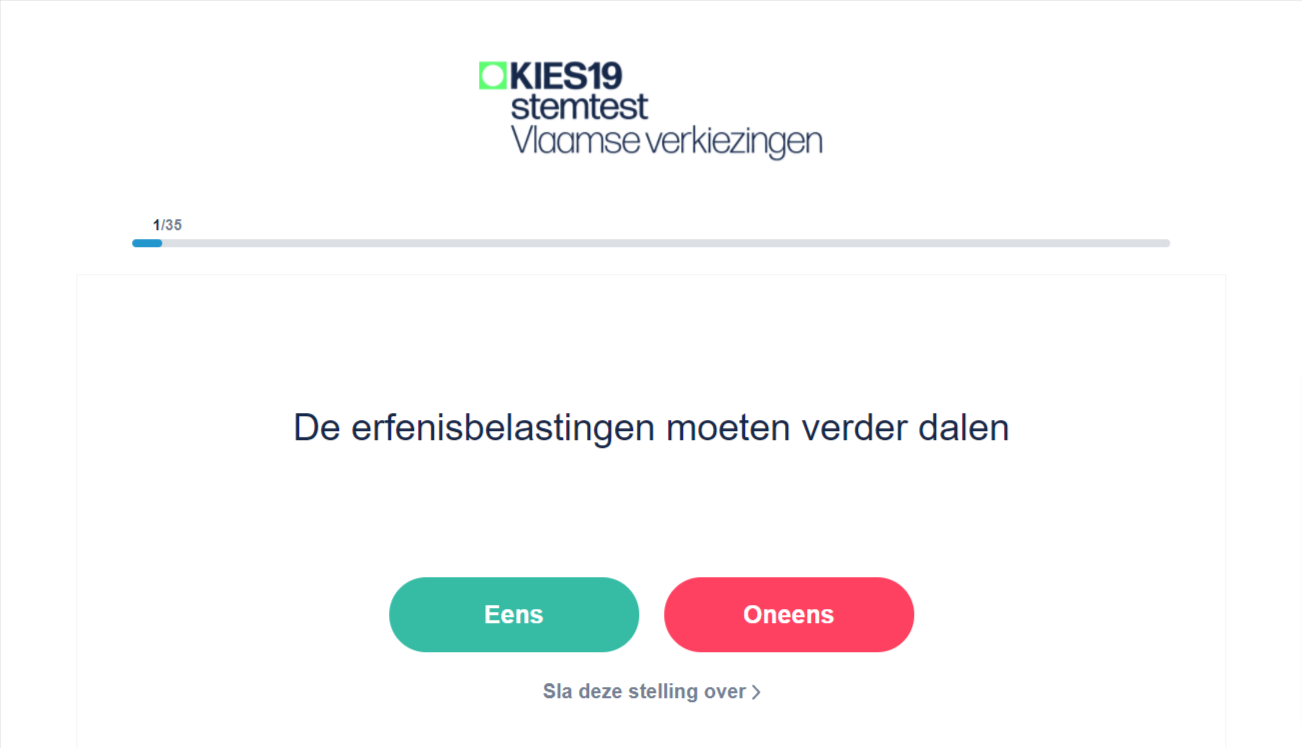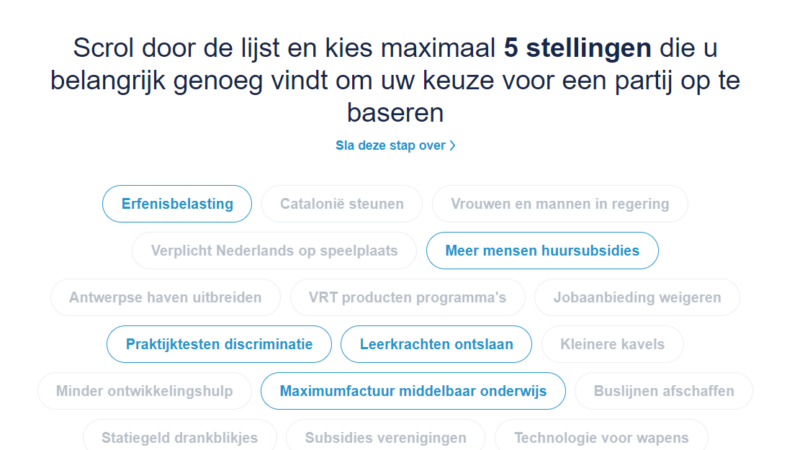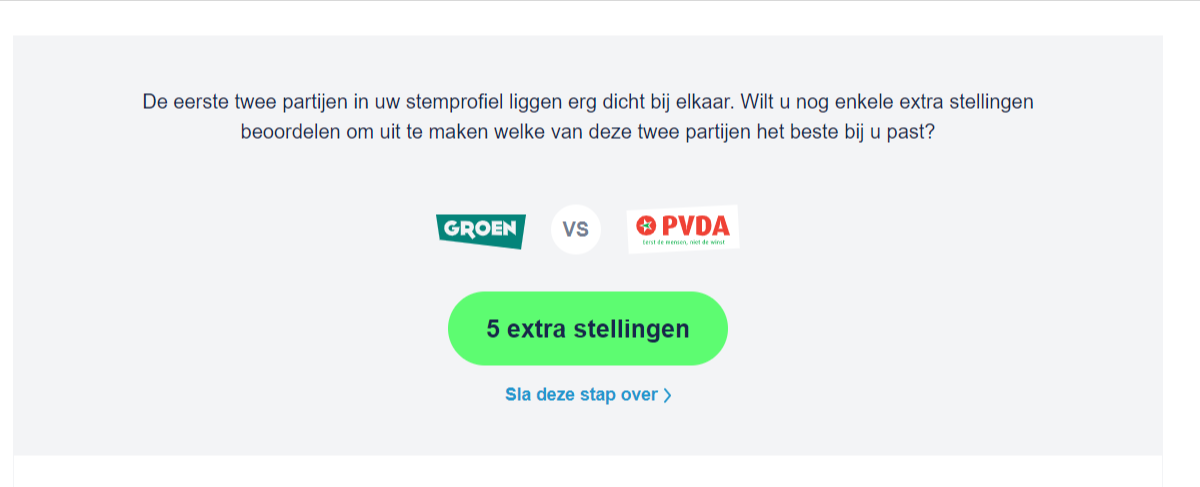The Voting Test
In 2003, Tree company made the first Voting Test in Flanders in collaboration with the University of Antwerp, in order of VRT and Mediahuis. From 2014 we did the same for French-speaking Belgium, in order of RTBF and IPM, with the Université Catholique de Louvain as academic partner.
The basic principle of The Voting Test is that by completing questions and statements, voters get an idea of which political parties match their views. That principle has remained unchanged since 2003.

How does it work?
The Voting Test contains 35 agree/disagree statements. Users can choose a few statements and give more weight to them. Also for the political parties, there are weights per statement according to the importance that party itself gives to the underlying issue. We measure this through the political party program.


The results
Participants receive output as a graph with bars representing their proximity to the positions of all parties. The parties are asked to justify their position, and users have access to that as well. And, if two parties in a participant’s voting profile are close to each other, the user has the option of getting additional statements to further differentiate those two parties from each other, which we call the shoot-out.


The elections in 2024
In 2024, a separate voting test will be built for each election, i.e. Flemish, Walloon-Brussels, Flemish federal, French-speaking federal, Flemish European, French-speaking European, Flemish Brussels and French-speaking Brussels elections.
What is new is that we are also going to build a “generic” or “cross-election” voting test in the two parts of the country that includes propositions or policy proposals that cross the various policy levels.
Furthermore, together with VRT and RTBF, a specific youth voting test is also being created that will look different from the regular voting tests and will contain different statements.
To be part of The Voting Test, a Flemish or French-speaking political party must have seats in one of the parliaments for which the 2024 elections will be organized. Furthermore, a party must also have a program that touches on a multitude of policy issues and a party must agree to announce an official position on the policy positions.
Quality and coverage
The Voting Test has grown in recent years to become the tool to determine political preference in function of elections. For the 2014 elections, for example, we counted 2 million users just in Flanders.
We also take care that the propositions do not always go in one particular ideological direction, but balanced in different directions. All theses are extensively tested among a representative sample of Flemish and/or French speakers. The academic input of the University of Antwerp and Université Catholique de Louvain is crucial for this.
